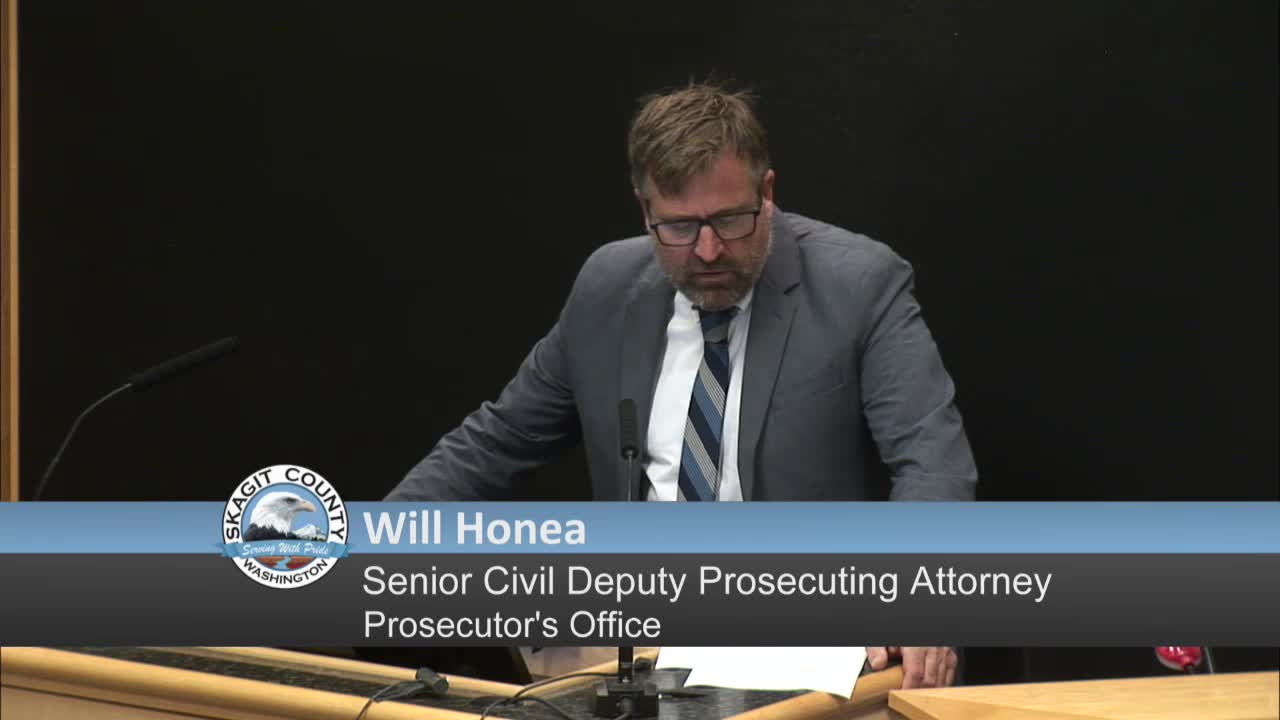Skagit Farmland Faces New Threats Amid Climate Change Concerns
September 23, 2024 | Skagit County, Washington
This article was created by AI summarizing key points discussed. AI makes mistakes, so for full details and context, please refer to the video of the full meeting. Please report any errors so we can fix them. Report an error »

In a recent government meeting, officials underscored the critical importance of protecting Skagit Farmland amid rising concerns over climate change and industrial development. Quoting Vice President Kamala Harris, they reiterated that climate change poses the greatest threat to humanity, prompting federal and state legislation aimed at promoting renewable energy projects.
The discussion highlighted the attractiveness of Skagit Farmland for energy project developers due to its proximity to existing electrical infrastructure and relatively low land costs compared to industrial-zoned areas. While farmland can be acquired for approximately $15,000 an acre, industrial land can reach prices of $1 million per acre. This discrepancy raises questions about the valuation of farmland, which is largely protected by local zoning laws that restrict its use to agricultural purposes.
Decades ago, Skagit County implemented stringent zoning regulations at the behest of local farmers, who sought to prevent the sprawl and development that has affected other regions. These laws have effectively maintained the farmland's low market value, making it appealing for various development interests, including energy generation and storage projects. However, officials emphasized the need for vigilance to ensure that agricultural land remains protected from non-agricultural development, especially as climate change threatens global food production.
The meeting also addressed the flood risks associated with Skagit Farmland, which lies within the floodplain of the Skagit River. Current levee systems offer limited flood protection, with expectations of catastrophic flooding every 25 years. Officials assured environmental groups and local tribes that any future development would be carefully managed to avoid exacerbating flood risks, reaffirming their commitment to preserving the farmland for agricultural use.
As climate change continues to impact agricultural viability worldwide, the protection of Skagit Farmland is seen as essential for ensuring food security and maintaining the region's agricultural heritage.
The discussion highlighted the attractiveness of Skagit Farmland for energy project developers due to its proximity to existing electrical infrastructure and relatively low land costs compared to industrial-zoned areas. While farmland can be acquired for approximately $15,000 an acre, industrial land can reach prices of $1 million per acre. This discrepancy raises questions about the valuation of farmland, which is largely protected by local zoning laws that restrict its use to agricultural purposes.
Decades ago, Skagit County implemented stringent zoning regulations at the behest of local farmers, who sought to prevent the sprawl and development that has affected other regions. These laws have effectively maintained the farmland's low market value, making it appealing for various development interests, including energy generation and storage projects. However, officials emphasized the need for vigilance to ensure that agricultural land remains protected from non-agricultural development, especially as climate change threatens global food production.
The meeting also addressed the flood risks associated with Skagit Farmland, which lies within the floodplain of the Skagit River. Current levee systems offer limited flood protection, with expectations of catastrophic flooding every 25 years. Officials assured environmental groups and local tribes that any future development would be carefully managed to avoid exacerbating flood risks, reaffirming their commitment to preserving the farmland for agricultural use.
As climate change continues to impact agricultural viability worldwide, the protection of Skagit Farmland is seen as essential for ensuring food security and maintaining the region's agricultural heritage.
View full meeting
This article is based on a recent meeting—watch the full video and explore the complete transcript for deeper insights into the discussion.
View full meeting
